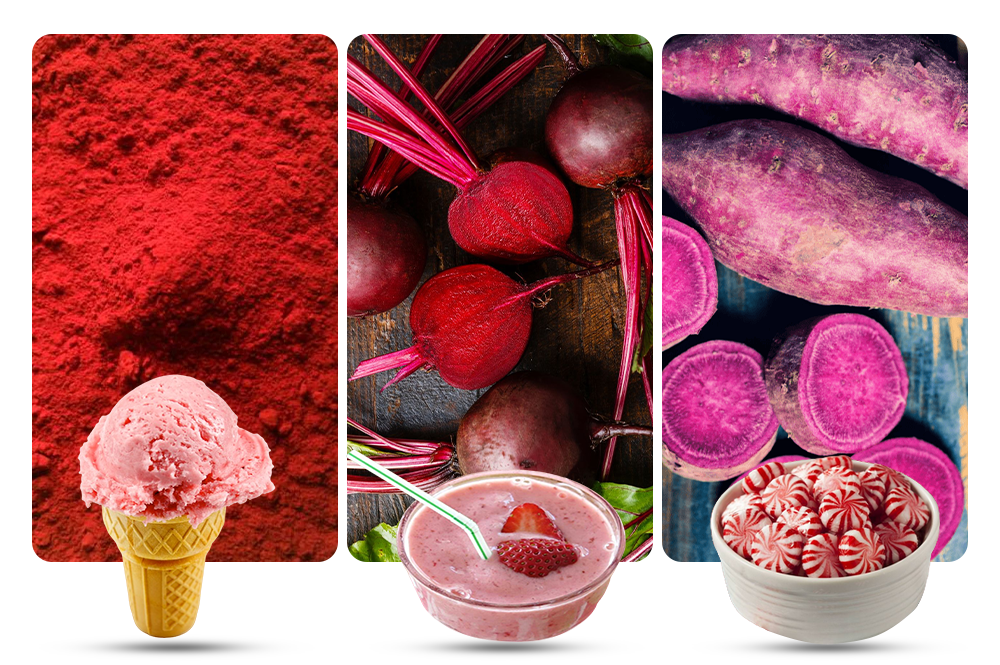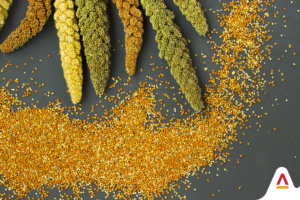The world of colours is going through a whirlwind this year. From the world running out of stock on the Barbie shade of pink to the inevitable banning of Red No. 3, the blushing side of the colour spectrum is going through significant global shifts.
What does this mean for the food industry?
There has already been a progressive and conscious shift from synthetic additives to natural food colouring, even though artificial food colouring has not been completely eliminated.
But food safety experts have recently been pushing for a ban on substances that have long been known to cause damaging side effects.

Red No. 3 in the Red
Erythrosine, famously known as Red No. 3, is a synthetic colouring additive widely used in sweets, baked foods, drinks, etc., to create intense cherry reds or lighter watermelon pinks. This artificial food colouring is a derivative of petroleum and has been a health concern to the public for decades, even though it has been considered safe if used in small quantities.
This rich and exuberant red dye has long been used to brighten the colouring of foods such as confections, cereals, beverages, frozen dairy desserts, ice cream cones, popsicles, condiments, sauces, icings and frostings.
FD & C Red No. 3 was also previously used in manufacturing makeup and cosmetics but was banned about 30 years ago owing to research showing its harmful effects in long-term use.
The California Food Safety Act
Scientific studies have discovered adverse effects from Red No. 3, which include an increased risk of cancer when tested on animals. Research has also shown that there were increased levels of hyperactivity in children, either with or without ADHD, who regularly consumed foods with these additives. It is speculated that damage to the reproductive and immune systems was another possible side effect.
The California Food Safety Act was signed by the Governor of California, Gov. Gavin Newsom, on the 7th of October, officially making California the first state in the US to prevent the manufacture, sale, or distribution of all food products that contained Red Dye No. 3. The Act also included the ban of three other chemicals: propylparaben, brominated vegetable oil and potassium bromate. This will take effect in 2027.
This ban on the artificial food colouring Red No. 3 has long been in place in the European Union and will soon be followed worldwide because of the health benefits that can be reaped in the long run.
The Great Red Switch
Switching from an artificial red to a natural one is not as simple as that because not all reds are equal.
Will the natural red colourings stand up to a popular food colouring such as Red No. 3?
Drawing from our extensive knowledge and understanding of pigments and plant extracts, Symega has crafted three food colouring palettes using our specialised techniques and advanced processes, which are available in both liquid and powder forms: NECOLTM, NATUREHUETM and COLOURSPECKSTM.
Choose the perfect alternative to Red No. 3 from the dynamic and vegan-friendly reds and pinks of Symega’s food colouring palettes to perfectly complement your high-quality food manufacturing needs.

Painting the Food Industry Red
Symega’s approach to food creation is unique in that we aim to create sensory experiences, not just ingredients. As a result, we have curated the safest, natural sources from which we bring you our expertly crafted reds and pinks.
Carmine: Sourced from cochineal, this bold red is often used to delicately colour delectable strawberry ice creams, fruit yoghurts, confectioneries and baked goods, making the natural alternative red colouring vegan-friendly.
Beetroot: In combination with black carrots, we use beetroots to create deep and earthy pinks that can be used to tinge yoghurts and ice creams.
Anthocyanins: Anthocyanin is used to create the vibrant red that lends vitality to confectionery, beverages, and other applications, where the pH range stays between 2 and 4. This pigment is commonly found in tubers and fruits such as purple sweet potatoes and grapes.
Symega offers a fresh range of safe and natural red and pink food colouring alternatives, adding life and colour to your food products. Once you’ve experienced the freshness and natural goodness of our natural food colours, you will never return to any other Red No. 3 alternative.
For more details, contact us at marketing@symega.com.



